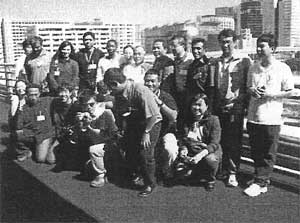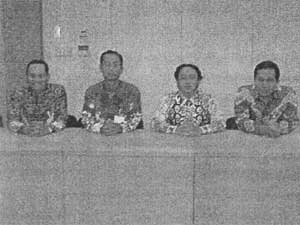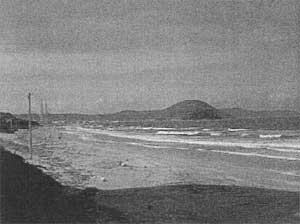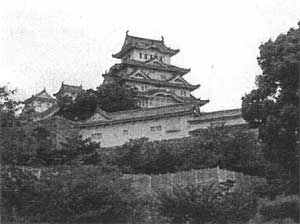|
By Komara, Rifanie
Even though it was not really the first field trip I have ever experienced during my study in WMU, this one was the first field trip outside Sweden. It took us about 11 hours, lack of sleep yet enthusiastic fight to Tokyo Narita Airport. Soon as we arrived, we were welcomed by the warm weather that reminded me of my home town. Orientation at OPRF and lunch at the Maritime Museum started our trip in Japan. It was the first time I meet Mr. Ichikawa, with whom I corresponded some emails related to Sasakawa Fellowship and the second time I meet Mr. Kudo after our first meeting in my office when he had informed me that I had been granted a fellowship to WMU.

After about 4 months staying in such tranquil city as Malmo, being in Tokyo was a contrast. So many people rushing to their works complicated system of subway and the dynamic sense of a city surrounded us as we try to catch up our tight schedule. Window shopping is always interesting, especially in Akihabara, the electronic city of Japan. I remember that the first time I heard about this area was from a Japanese Cartoon on TV. It was the second time I visited the area, still it was fascinating to see the latest model of electronic equipments with lower price compared to Malmo.
Visiting MLIT on the following day was the opportunity to know the latest development of sea transportation in Japan. I found that Japan is developing so called super-hub ports by integrating the operation of some major ports to boost container traffic that has been slightly decreasing after 2000. The Director General himself welcomed us on this occasion where Mr. Browne has a chance to present him a souvenir from WMU. It was the first time we meet Fumi-san, a 2004 WMU graduate that accompanied us through out our journey.

Then, the most important moment came when we met face to face with Mr. Yohei Sasakawa, the man that has granted us opportunity to study in WMU. Frankly speaking, all the words I had been prepared to address him were totally lost when it was the time for me to speak. Thank God, I made it though. I even had a chance to ask him a question which resulted in a satisfactory answer to my excitement of meeting him. The welcoming party was exhilarating because we had a chance to talk to distinguished guests. Some of them are CEO of maritime related industries. Not to mention the food and the premier performance of WMU School Song for the trip.
The next day visit to PARI gave us knowledge of recent research on port and marine engineering. For me, the development of tsunami breakwater is the most remarkable breakthrough that would help and save people in coastal area, particularly after the 2004 tsunami hit north-western area of my country. The boat trip to MDPC Island was exciting. We sang WMU Song along the trip to avoid sea sickness. Some fire combating performed on the island made me forget about the rain pouring all over me.
Experience onboard two famous training ships made me imagining how the real life onboard a ship is. The free time afterwards gave me and some fellows a chance to visit Asakusa Temple and the Imperial Palace. Unfortunately, we were forbidden to enter the palace, but the imperial park itself was fascinating. It might be the rain that caused me to get a headache at night, but the following morning it was thankfully over.
After 3 hours flight to Fukuoka, we were welcomed to a fancy restaurant providing us the best food and seaside scenery. The tour guide thanked us for bringing the sunshine from Malmo. It really felt like home, especially the tropical breeze and salted smell of the beach. The following trip to Namura Shipyard added a new knowledge of shipbuilding process and how important the safe working environment is in the industry.

The Yawata Works of Nippon Steel Corporation showed us how steel being made from iron ore, coal and limestone. Some colleagues asked about the implementation of just-in-time system that we previously learned from Prof. Shuo Ma. They have a one month inventory, much more than Toyota which is the inventor of the system. It is reasonable though, since they have to import the raw materials overseas. After having lunch onboard the bus, a ferry trip around Hakata Bay was a medication to our exhausted energy. The port management's explanation about the ownership and operation of the port gave us some more insight view. It was the end of our official and formal field trip in Japan.

The last day was hilarious because of the Shinkansen trip to Himeji. It was a seven story watch tower on a hill that has been settled as international heritage of Japan. The trip brought us back to the shogunate era of Japan with heroic history coloured by love of a princess and an ordinary man that finally became a shogun.
I do not know why but I think the trip was the shortest one week ever. All of sudden, I was on a plane landed on Copenhagen Airport. I had not expected sunshine in Malmo but it was. The trip was over and the assignments were waiting ahead.
To meet with President Sasakawa and attend Reception
We met Mr. Sasakawa on 11th September. At this meeting, we were given the opportunity to introduce us by ourselves to Mr. Sasakawa. After taking group picture, some of us had an opportunity to talk with Mr. Sasakawa individually through handing over their souvenirs.
We are invited reception after meeting with Mr. Sasakawa. During reception, we can share the time to communicate with a lot of professionals who work on not only the maritime fields but also diplomacy fields such as ambassador. This is one of the best opportunities to make a new network for each other. Surprisingly, birthday cake for Htay was presented from Mr. Sasakawa. When Mr. Sasakawa knew that Htay's birthday was this day 11th September, he requested to buy cake for my friend. This might be one of the best memorial birthdays for my friend.
Seasickness!
On Tuesday l2th September, we visited at Maritime Disaster Prevention Center. When we moved from shore to island in order to see the fire extinguishing drill, we had to be on board small boat under the windy weather. Therefore, some of us suffered from seasickness.
Free time in a half day in Tokyo
On Wednesday 13th September, we have a free time in the afternoon. Most of us went to several place for instance Asakusa to visit Sensou-temple, Tokyo tower, Imperial Palace and Akihabara for shopping. I believe all my friends were able to know what are Japanese people or what is Japanese culture through asking Japanese to know how to get their destinations or taking train. Moving around by ourselves in the foreign countries is the most exciting travel because we must contact with people who live in there and we can see the ordinary people. I have been several countries because of seafarer. What I appreciate most about trip to go to foreign countries is to go to supermarket. This is because I can see their life styles. For this reason, my friends could enjoy seeing Japanese life style.
To visit in Kyusyu
We moved from Tokyo to Hakata in Kyusyu on 14th Sep. During staying in Kyusyu, we can see another aspect of Japan. Most of people, who have never been Japan before, have image of Japan like a Tokyo (there are a lot of buildings in a narrow space and lack of green); however we were able to see the rural landscape on the way to the Namura Shipbuilding Co.,Ltd. One of my friends said to me that this landscape is totally similar to my country. Seeing country side leads my friends to have affinity.
I really enjoyed Japan field trip because my friends enjoyed it.
JAPAN well developed and industrialised country, it was my first tour, very wonderful and exciting to me. The Sasakawa Fellows students left the Henrik Smith Residence at 11:30 on 9th September morning and departed Malmö [Sweden] train station at 12:44 to Copenhagen [Denmark] and then we took - SAS Airlines from Copenhagen [Denmark] airport with SK 983 - 15:45 which arrived Narita [Japan] Airport on 10th September morning at 09:35. The main purpose of the visiting Japan was to meet Mr. Yohei Sasakawa, the chairman of the 'The Nippon Foundation' and the 'Friends of WMU, Japan' and to know the Maritime Affairs of Japan.
We left from the Narita International Airport at 10:30, 10th September [Sunday], to Shiodome and stayed at Hotel Villa Fontaine SHIODOME. Before we went to hotel, we visited to the Museum of Maritime Science which is located very closed to Funenokagakukan station about 20 minutes from Shinbashi train station. The same route through the Aqualine was used to the way back. The museum was founded by Mr. Ryoichi Sasakawa the father of Mr. Yohei Sasakawa, in Odaiba reclaimed land area. Our group members had their lunch at the museum's restaurant in the atmosphere of a luxury liner. The museum concrete structure shaped similar with giant passenger cruise liner. The exhibitions of Japanese Maritime culture since Edo era bezai ship to the latest several type of most modern ship, such as, VLCC, Containers, Tug boat, Dry break bulk, LNG carrier, Survey ship, Submarine, Offshore submersible MODU and under water station. There were hundreds of comprehensive useful models and simulators to learn about the maritime science, such as ship design and construction, shipbuilding and ship propulsion. Unfortunately due to tight schedule the whole group member had limitation of time to learn more of maritime science.
On the 11th September [Monday], we visited the Ministry of Land Infrastructure and Transport. We were briefed about the various activities of the maritime sector by the managing director of MLIT in Japan. We got a good knowledge and experience to know about the Japanese shipping, seafarers' affairs and its development. On the afternoon of the same day, we met the honourable and generous Chairman of the 'The Nippon Foundation' Mr. Yohei Sasakawa. He emphasized on the exchange of views among different countries in the maritime field. His contributions to the Japanese Maritime Affairs as well as to the various maritime fields of the developing countries are inspiring and appreciable. He said to the students that he feels much rewarded in hearing the plans of the students for the future and emphasized that as long as the students will use the professional skills developed in the WMU to contribute to the respective country but also to the world, he would also feel gratified. The visit finished with a dinner that joined professionals from the maritime field, some Ambassadors, staff from The Nippon Foundation and ex-WMU students. It gave great opportunity for exchange professional information, increase network as well as socializing. I was very happy because it was absolutely my 36th anniversary birthday. In fact it was a very fruitful and memorable day for my life.
On the 3rd day in Japan, we visited to the Port & Airport Research Institute and the Marine Disaster Prevention Centre. On the next day, 13th of September in Japan, we had a tour to the on board of Nippon Maru and Seiun Maru and got a little bit free time. In our private tour, we met many general Japanese people. They are really very helpful, polite and punctual. Usually they do not start talking to foreigners, but when you start talking them, they will give you good response and will try to do the best to help you. I like Japanese people very much because of their hospitality and politeness natural culture.
On the 14th September [Thursday], we had a tour to the Namura Shipbuilding. On the following day, 15th of September, we had a tour to the Nippon Steel Corporation, Yawata Works which was started operations in 1901, marking the first step in the Japanese steel industry. Japan Iron & Steel Co., Ltd., formed with Yawata Works as the nucleus, was split to Yawata and Fuji Steels in 1950 under the Law for the Elimination of Excessive Concentration of Economic Power. Twenty years later in 1970, the two companies merged again and the present Nippon Steel Corporation was born. We visited to the Port of Hakata on the afternoon of the same day.
On the early in the morning of 16th September [Saturday], we departed from the Hakata to visit Himeji Castle which is located in the centre of Himeji City, about 50 kilometres west of Kobe and about 650 kilometres west of Tokyo. It takes about fours hours by bullet train from Tokyo. In 1993, Himeji Castle was registered on UNESCO's World Heritage list, because it is a wooden castle structure of incomparable worth in the world and the whole structure including towers, stone ramparts, and earthen walls are extremely well preserved. We stayed in the Kobe Harborland and hold the Farewell party at 19:00 - 21:00. The 16th of September was the last night and day of our memorable stay in Japan.
We departed from the Hotel to Kansai Airport Osaka [Japan] from which we took Lufthansa Airlines - LH 741 - 09:55 and arrived Frankfurt [Germany] at 15:05. We left Frankfurt with Lufthansa Airlines - LH 3076 - 16:35 to the Copenhagen [Denmark] airport at 17:55. We departed from Copenhagen by train to Malmö. From the beginning to the end of the tour I really observed an example of excellent management of Japanese people. I must say this is one of the factors of development of Japan. Now we are leaving the Japan, a country of good friends and as a model of the Asia countries, but we had the tasks to be done such as assignments and examinations in WMU, Malmö, Sweden.
|